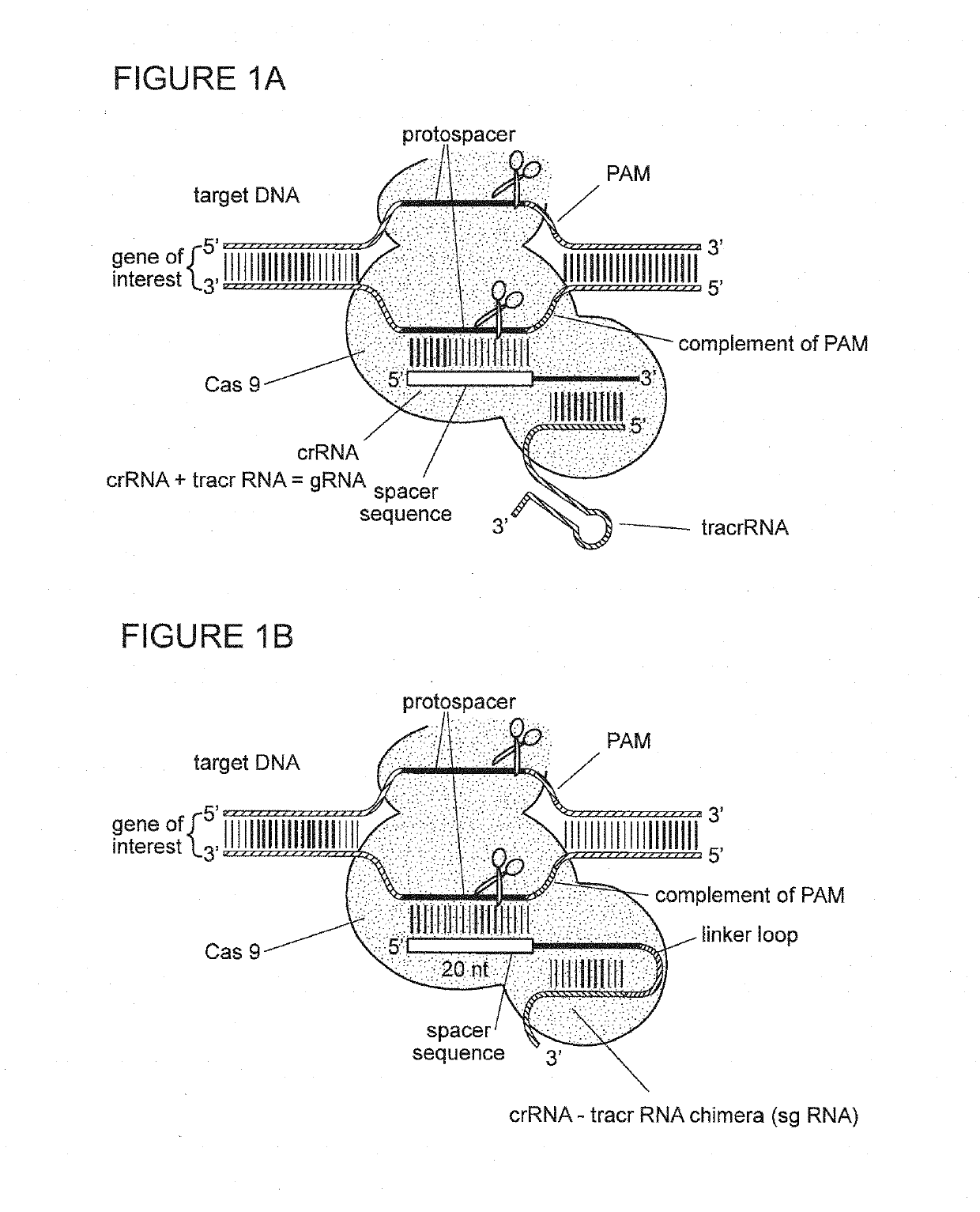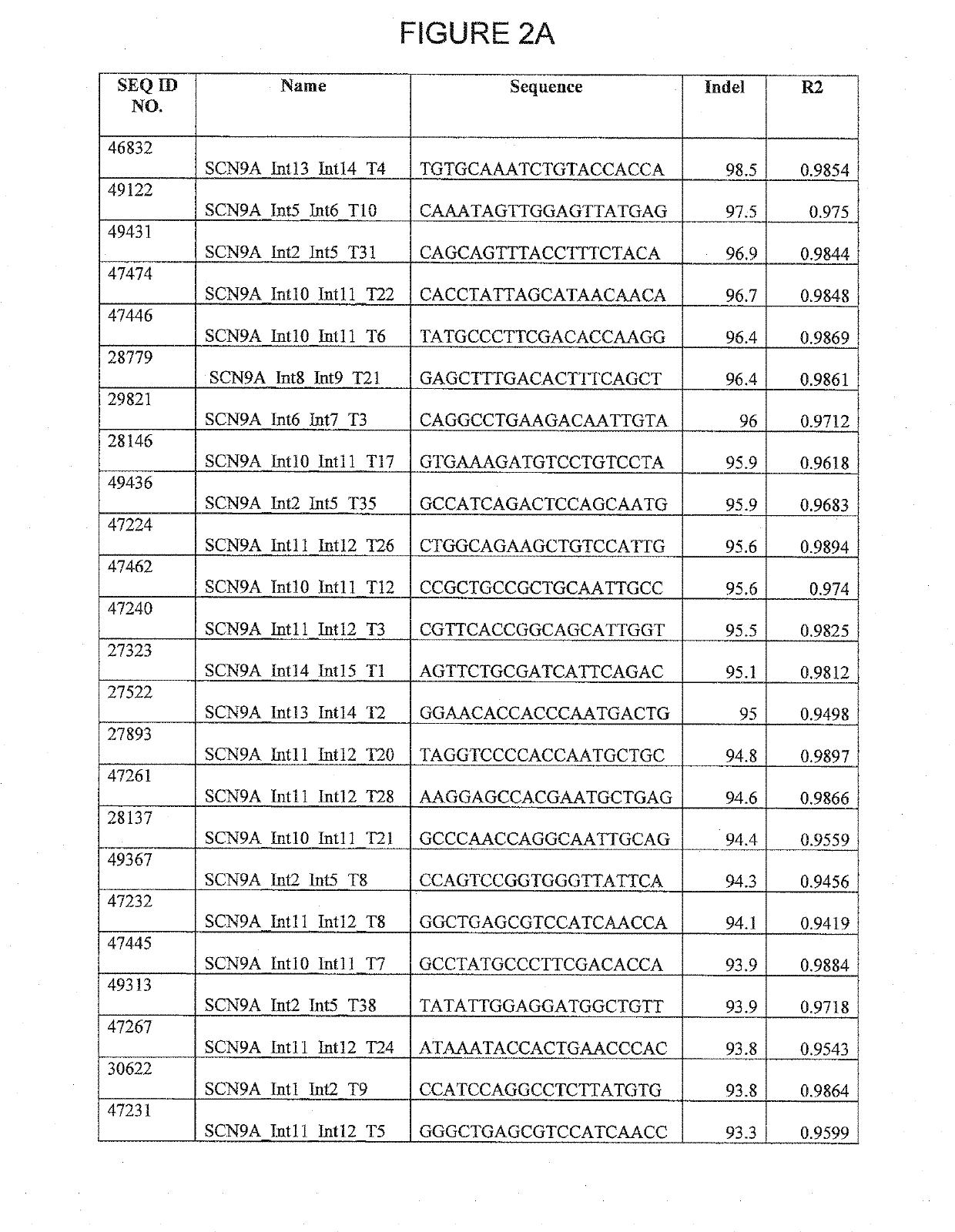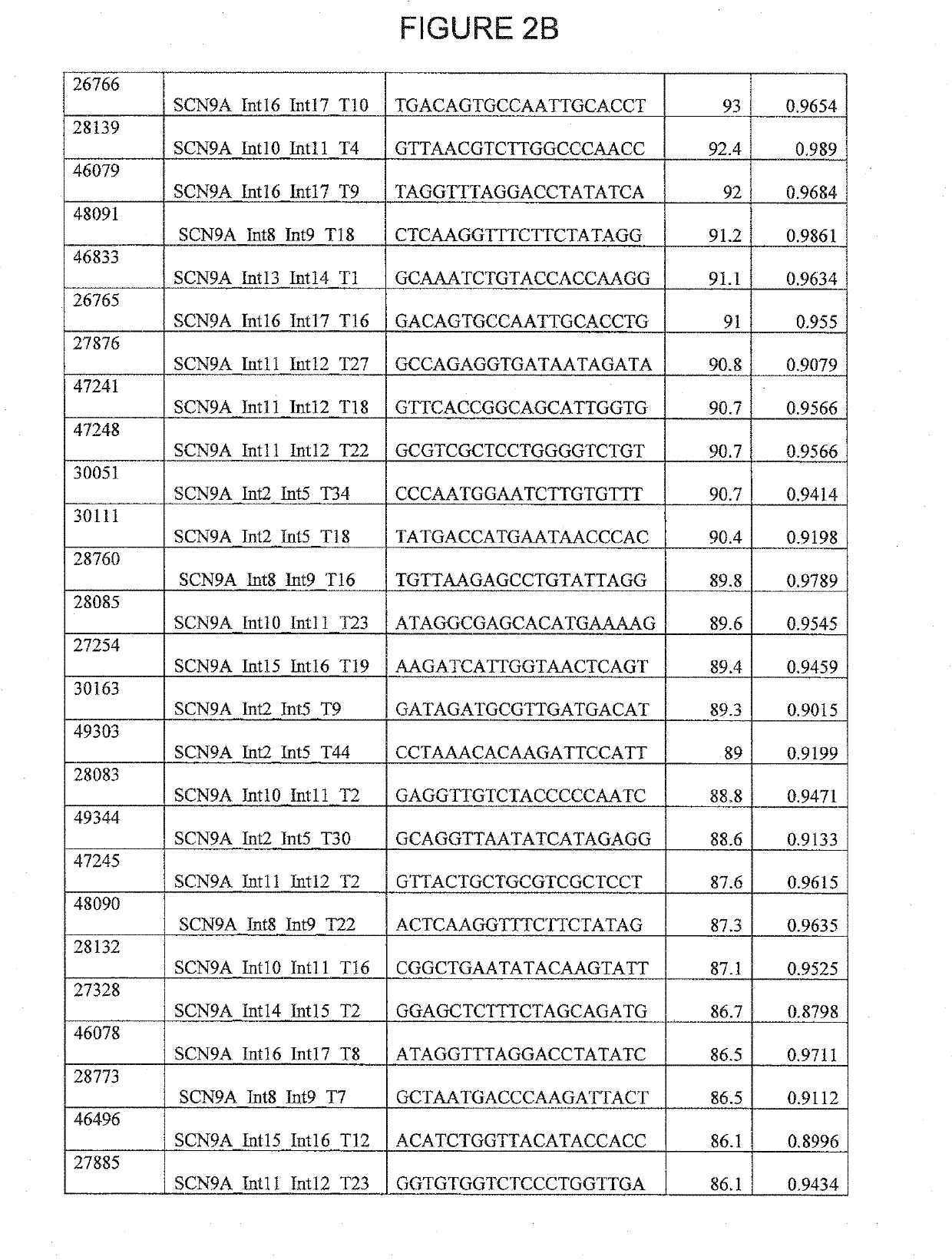Materials and methods for treatment of pain related disorders
a technology of pain and material, applied in the field of gene editing, can solve the problems of disrupting affecting the expression of the gene, and removing sequences within or near the gene,
- Summary
- Abstract
- Description
- Claims
- Application Information
AI Technical Summary
Benefits of technology
Problems solved by technology
Method used
Image
Examples
example 1
CRISPR / SpCas9 Target Sites for the SCN9A Gene
[0452]Regions of the SCN9A gene were scanned for target sites. Each area was scanned for a protospacer adjacent motif (PAM) having the sequence NRG. gRNA 20 bp spacer sequences corresponding to the PAM were then identified, as shown in SEQ ID NOs: 18989-56863 of the Sequence Listing.
example 2
CRISPR / SaCas9 Target Sites for the SCN9A Gene
[0453]Regions of the SCN9A gene were scanned for target sites. Each area was scanned for a protospacer adjacent motif (PAM) having the sequence NNGRRT. gRNA 20 bp spacer sequences corresponding to the PAM were then identified, as shown in SEQ ID NOs: 8562-13614 of the Sequence Listing.
example 3
CRISPR / StCas9 Target Sites for the SCN9A Gene
[0454]Regions of the SCN9A gene were scanned for target sites. Each area was scanned for a protospacer adjacent motif (PAM) having the sequence NNAGAAW. gRNA 20 bp spacer sequences corresponding to the PAM were then identified, as shown in SEQ ID NOs: 6251-8561 of the Sequence Listing.
PUM
| Property | Measurement | Unit |
|---|---|---|
| pH | aaaaa | aaaaa |
| pH | aaaaa | aaaaa |
| pH | aaaaa | aaaaa |
Abstract
Description
Claims
Application Information
 Login to View More
Login to View More - R&D
- Intellectual Property
- Life Sciences
- Materials
- Tech Scout
- Unparalleled Data Quality
- Higher Quality Content
- 60% Fewer Hallucinations
Browse by: Latest US Patents, China's latest patents, Technical Efficacy Thesaurus, Application Domain, Technology Topic, Popular Technical Reports.
© 2025 PatSnap. All rights reserved.Legal|Privacy policy|Modern Slavery Act Transparency Statement|Sitemap|About US| Contact US: help@patsnap.com



